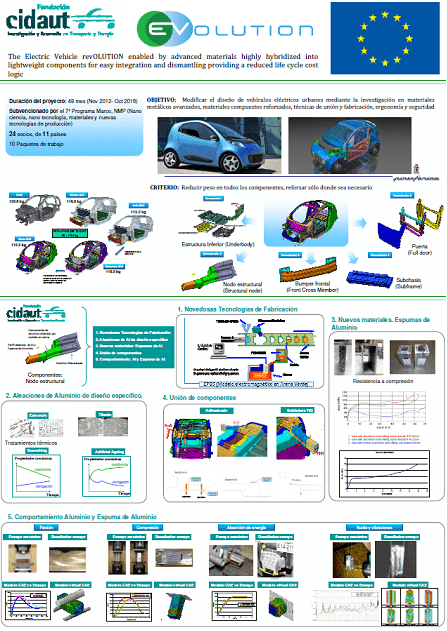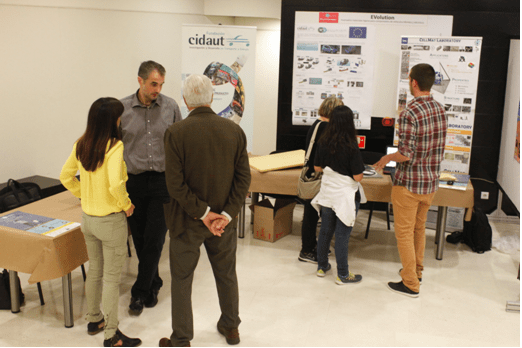27/08/2015 by cidaut
On Friday 25th of September the Valladolid Science Museum presented the 10th congress “European Researchers´ Night”. This event is an initiative from European Union organized by Valladolid University under the motto ‘Scientifics for a better future’. This event offered a delightful evening with educational activities for all the attending public, being the main objective to bring closer the researchers and their knowledge to the general public, achieving a general improvement in the research environment. In this congress, universities, research centres and museums of fourteen cities around Spain have taken part.
Within the “European Corner”, researchers of several universities and some companies have shown and explained innovative projects funded by European commission. CIDAUT has exhibited to the assistants the different activities developed in the EVolution project.
EVolution is a research project funded by the European Commission under the 7th Framework Programme. The objective of the project is to develop new materials which will significantly reduce the weight of the new generation of hybrid and electrical vehicles.
The EVolution project started in November 2012 and has a duration of 4 years. It is funded by the European Commission under the NMP Programme of the Seventh Framework Programme. The project is organised into ten Work Packages which each play a crucial role in the implementation of the project.
CIDAUT is in charge of one demonstrator, the structural node, the main objective, is to implement an innovative solution for aluminium components, a co-cast joint between different elements produced with different manufacturing processes.
The technology developed by CIDAUT, a green sand mould casting process, provides the media to link different parts when they are placed into a sand mould and then molten aluminium flows around them. After casting operation, a heat treatment process could be applied in order to improve the microstructure obtained during the slow solidification process. This process required the absence of pores inside the component and in order to maintain a good fluidity, thick sections and addition of silicon are necessary.

